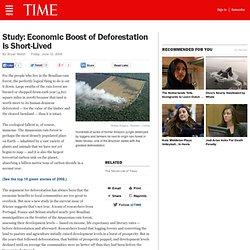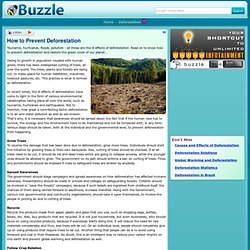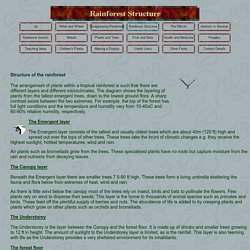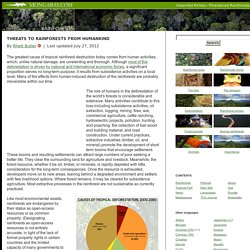

Study: Economic Boost of Deforestation Is Short-Lived. For the people who live in the Brazilian rain forest, the perfectly logical thing to do is cut it down.

Large swaths of the rain forest are burned or chopped down each year (4,621 square miles in 2008) because that land is worth more to its human denizens deforested — for the value of the timber and the cleared farmland — than it is intact. The ecological fallout is, of course, immense. The Amazonian rain forest is perhaps the most densely populated place on Earth — inhabited by a vast variety of plants and animals that we have not yet begun to map — and it is also the largest terrestrial carbon sink on the planet, absorbing 2 billion metric tons of carbon dioxide in a normal year. The argument for deforestation has always been that the economic benefits to local communities are too great to overlook.
But now a new study in the current issue of Science suggests that's not true. It's not hard to see why deforestation pays off, at least initially. But those improvements are transitory. How to Prevent Deforestation. Owing to growth in population coupled with human greed, there has been widespread cutting of trees, all over the world.

The trees, plants and forests are being cut, to make space for human habitation, industries, livestock pastures, etc. This practice is what is termed as deforestation. In recent times, the ill effects of deforestation have come to light in the form of various environmental catastrophes taking place all over the world, such as tsunamis, hurricanes and earthquakes. Not to mention, how great a contributing factor deforestation is to air and water pollution as well as soil erosion. That's why, it is necessary that awareness should be spread about the fact that if the human race has to survive, the ecology and the environment have to be maintained and not be tempered with, in any form.
Grow Trees To reverse the damage that has been done due to deforestation, grow more trees. Follow Crop Rotation Farmers should make use of environment savvy techniques like crop rotation. 2.2 Tropical Rainforests - Google Slides. Energy Flow and Nutrient cycling in tropical rainforests. The Tropical Rainforest. Tropical Rainforests are the world's most productive ecosystems in terms of NPP and biomass.

They are complex ecosystems with variations in climate, temperatures, and vegetation, within individual forests. Temperatures are often thought to be permanently high, but they are highest on the forest edge where vegetation is more limited. Amazon rainforest. Rainforest Structure. The arrangement of plants within a tropical rainforest is such that there are different layers and different microclimates.

Threats to Rainforests from Humankind. The greatest cause of tropical rainforest destruction today comes from human activities, which, unlike natural damage, are unrelenting and thorough.

Although most of this deforestation is driven by national and international economic forces, a significant proportion serves no long-term purpose; it results from subsistence activities on a local level. World of Change: Amazon Deforestation : Feature Articles. The state of Rondônia in western Brazil — once home to 208,000 square kilometers of forest (about 51.4 million acres), an area slightly smaller than the state of Kansas — has become one of the most deforested parts of the Amazon.

In the past three decades, clearing and degradation of the state’s forests have been rapid: 4,200 square kilometers cleared by 1978; 30,000 by 1988; and 53,300 by 1998. By 2003, an estimated 67,764 square kilometers of rainforest—an area larger than the state of West Virginia—had been cleared. By the start of this satellite time series from the Moderate Resolution Imaging Spectroradiometer (MODIS) on NASA’s Terra satellite, the frontier had reached the remote northwest corner of Rondônia. Intact forest is deep green, while cleared areas are tan (bare ground) or light green (crops, pasture, or occasionally, second-growth forest). Over the span of 12 years, roads and clearings pushed west-northwest from Buritis toward the Jaciparaná River.
How Does the Climate Affect the Ecosystem of the Rainforest? Tropical rainforests cover more than 30 million square kilometers.

Temperate rainforests add another 300,000 square kilometers (116,000 square miles). Those numbers sound large, but they represent only about 6 percent of the Earth's surface -- yet the rainforests supply more than 40 percent of the Earth's oxygen and contain more than half of the planet's biomass. Those are reasons enough to want to understand the climate and ecosystem of the rainforest. Climate and Ecosystem Every ecosystem is intricately tied to its climate. Temperate and Tropical Rainforests Two-thirds of the world's temperate rainforests are along the Pacific Northwest coast of North America.